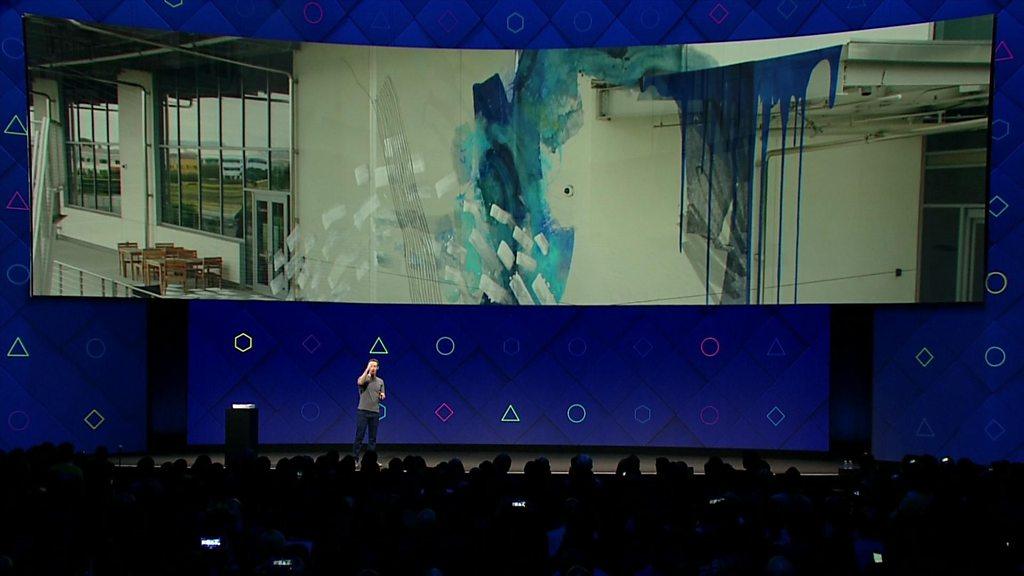Snapchat exhibits virtual Jeff Koons sculptures
- Published
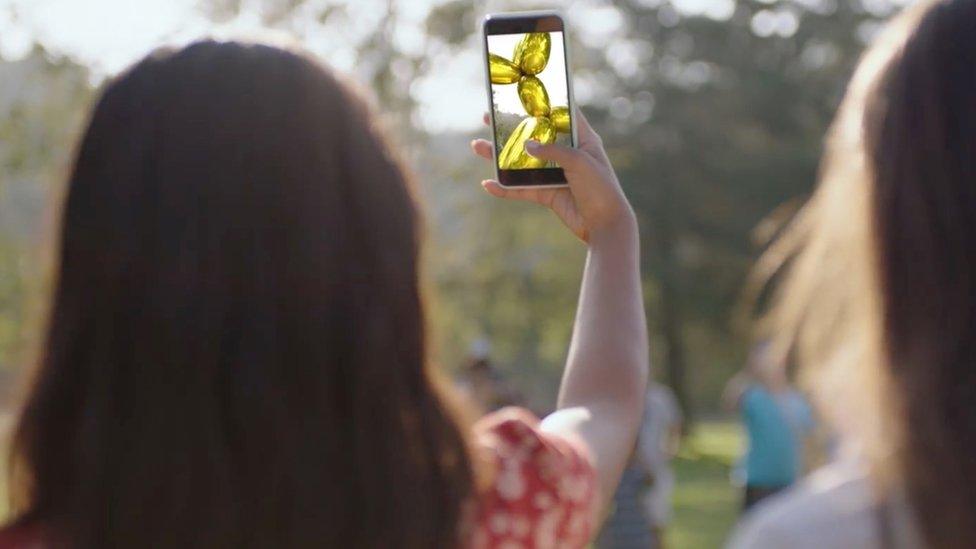
Snapchat users can only see the artworks if they are at specific locations
Snapchat is displaying virtual sculptures by the artist Jeff Koons at nine locations across the world.
The artworks - which include a version, external of his giant bubble dog and a large multi-coloured pile of Play-Doh - are shown as augmented reality exhibits superimposed over real-world views captured by smartphone cameras.
Facebook announced plans for a similar feature earlier this year but has not launched it yet.
Early reactions have been mixed.
The Techcrunch news site visited one exhibition site in New York's Central Park and reported experiencing glitches when it tried to view the imagery.
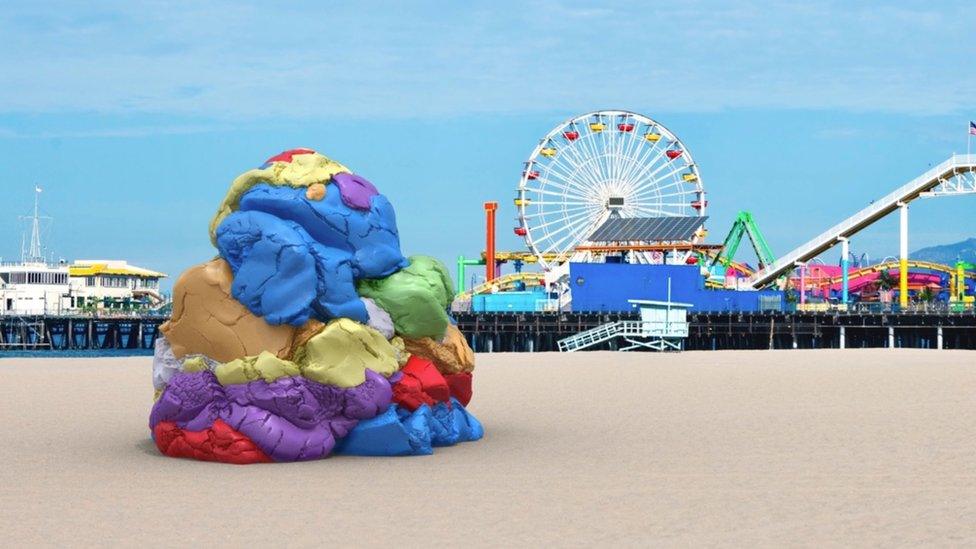
A giant pile of Play-Doh can be seen at Los Angeles' Venice Beach
"The first few times the AR sculpture was changing locations, floating randomly in the sky and overlaying itself on concrete pillars," it reported, external.
It said that the feature was also very taxing on its handset's battery, but added that it was "fun to walk around" the three-storey high artwork when the software worked as intended.
Other places where the art can be temporarily viewed via Snapchat include London's Hyde Park, Rio de Janeiro's Copacabana Beach and the area in front of the Sydney Opera House.
The app is now inviting other artists to contact it to propose similar tie-ups.
Its makers have highlighted efforts to attract more over-25s, external to their platform in recent months, and one expert said this should boost their campaign.
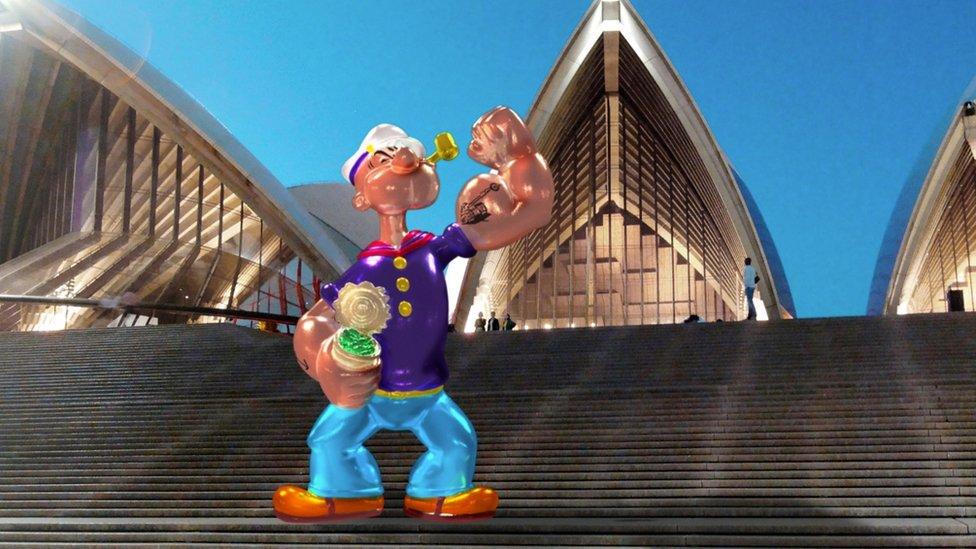
Snapchat users can walk around the virtual statues for different views
"Snapchat needs to appeal more broadly than to just teenagers and millennials, particularly since older audiences often have more disposable income making them desirable to advertisers," commented Chris Green from the tech consultancy Lewis.
"This helps make Snapchat more relevant to people with interests in art and culture, as well as providing advertisers in the premium luxury space with a justification to work with the app."
The launch coincided with an appearance by parent company Snap's chief executive at an event run by Vanity Fair magazine.

Evan Spiegel was interviewed on-stage at Vanity Fair's Los Angeles event
Evan Spiegel addressed concerns that investors had about his firm's prospects.
Slower-than-expected user growth and disappointing earnings have caused analysts to scale back their forecasts for the firm, external, which in turn has pushed Snap's shares below the price they floated at in March.
Mr Spiegel said that he believed some of the doubts were part of a "natural... getting-to-know-you period for Wall Street".
But he acknowledged that he had "underestimated" how important it was to communicate with shareholders about the business.
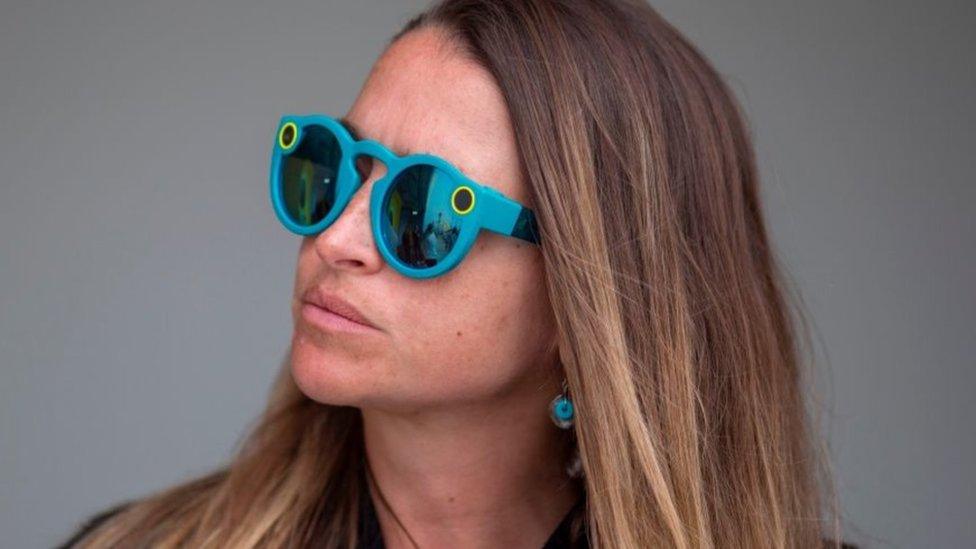
Snapchat's Spectacles first went on sale in November 2016
As part of that effort, he disclosed the company had sold more than 150,000 pairs of its video camera-equipped Spectacles since they launched in the US last year.
While that is a relatively low number for a mainstream consumer electronics product, Mr Spiegel said it was above his own company's forecast and noted that it had surpassed demand for the original iPod in its first year.
Looking ahead, he said he expected hardware to be financially important to the company in a decade.
However, he did not discuss reports his firm was in talks to buy the Chinese dronemaker Zero Zero Robotics.
- Published18 April 2017
